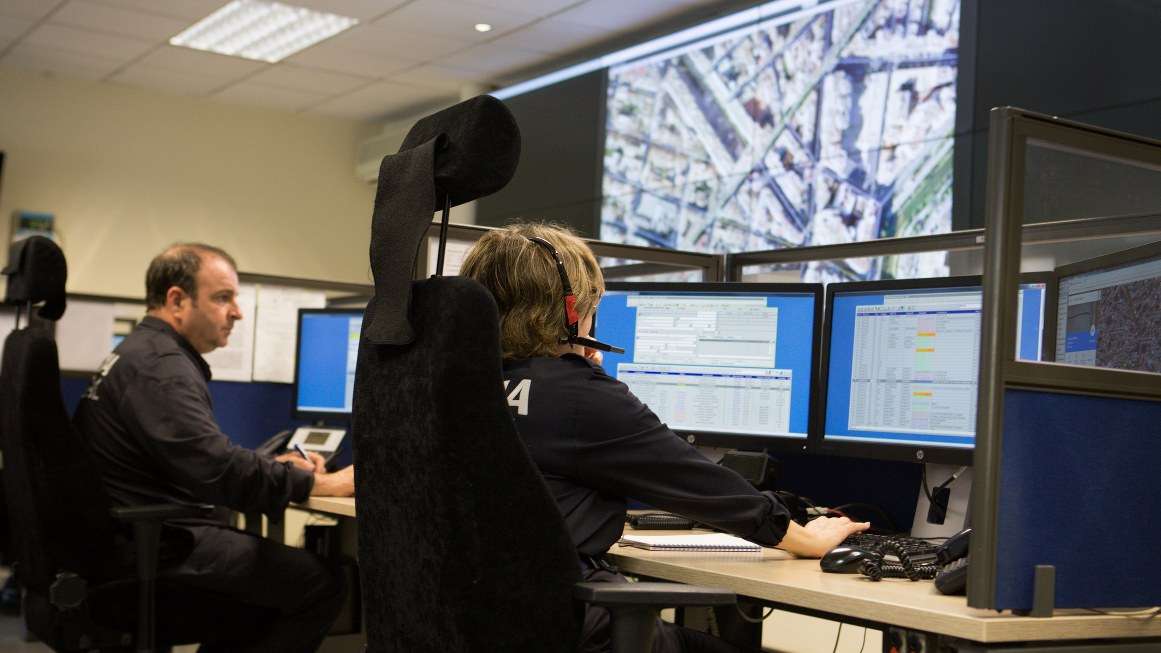
In the race among U.S. law enforcement agencies to be the snoopiest, most intrusive, and greatest threat to privacy, it’s really hard to score the players. To a great extent, that’s because the eavesdroppers and keyhole-peepers are more enthusiastic about monitoring us than they are about letting us know that they’re watching. Fortunately, the Electronic Frontier Foundation (EFF) is there to keep an eye on things and to let us know who is the nosiest of them all.
“This week, EFF’s Atlas of Surveillance project hit a bittersweet milestone,” EFF’s Dave Maass, director of investigations, noted Nov. 17. “The Atlas of Surveillance has now hit 10,000 data points. It contains at least partial data on approximately 5,500 law enforcement agencies in all 50 states, as well as most territories and districts.”
While incomplete, as is unavoidable in any effort to track government bodies that resent being subject to the sort of scrutiny they inflict on others, the Atlas of Surveillance is a fascinating source of information (we previously covered it in 2020, when it included only 3,000 agencies). It’s of clear value to journalists, civil liberties advocates, and anybody concerned about going about their business with a modicum of privacy. The Atlas is searchable, mappable, and allows you to select or deselect specific types of surveillance such as license-plate readers, doorbell-camera networks, and facial recognition. That’s handy for determining the pervasiveness of the surveillance state where you live, and for planning journeys—although good luck picking entirely anonymous routes.
I searched for Cottonwood, Ariz., the nearest town to my home. Like many law-enforcement agencies, the Cottonwood Police Department uses body-worn cameras to minimize disputes over what happens in interactions between police and the public. The nearby Yavapai-Apache Nation Tribal Police Department also uses body-worn cameras, as do many Arizona law-enforcement agencies.
The Atlas also reveals that the Cottonwood Police Department has a partnership with Ring, the Amazon-owned home-security company, that allows police access to doorbell-camera footage from customers. Participation was originally sold as voluntary, but we now know that Ring makes recordings available on police request without a warrant.
It’s a relatively easy way to build a surveillance state, installed and paid for by those being scrutinized.
Out of curiosity, I also pulled up a map of the road trip my son and I recently took to visit the campus of Kansas State University. I like driving to see the sights but, even with no highway equivalent of the TSA (yet), it’s increasingly difficult to escape scrutiny on these journeys. According to the Atlas of Surveillance, we passed through jurisdictions that, in addition to bodycams and doorbell cameras, register private surveillance cameras for official use, monitor the public with drones, detect gunshots, use facial recognition, track cellphones, and automatically check passing license plates against databases.
On Interstate 40, the village of Milan, N.M., “partnered with a tech startup, Flock Safety, to install two license plate reading cameras around the village,” according to KRQE. “One near the interstate and the other near Milan Elementary School. The cameras scan a vehicle’s license plate and can send a real-time alert to police when a car comes up stolen or if the driver is a fugitive.”
By that point we’d already passed through the drones and automatic license plate readers of the Navajo County Sheriff’s Department, in Arizona.
Unsurprisingly, interstates are the most highly scrutinized roads, with greater—though not complete—privacy afforded on smaller, less-trafficked roads. The leg of our journey in Kansas probably went largely unmonitored, especially since we used cash for gas and meals.
Around town, government surveillance cameras, home doorbell cameras, and other private cameras accessible by police are the greatest concern. Some jurisdictions have restricted police use of certain surveillance technology, such as facial recognition. But San Francisco is one of those jurisdictions, and it recently eased the way for increased police access to private surveillance cameras in real-time. A policy lasts right up until it’s reversed.
Likewise, Ring currently doesn’t include facial recognition in its offerings and the company swears it “will neither sell nor offer facial recognition technology to law enforcement.” But the company also holds patents on the technology and several competitors offer facial recognition, though they’re not so closely associated with police departments.
Few of these surveillance systems are networked together at present, though the Ring network comes the closest because it’s based around one company. License-plate cameras and facial-recognition software are also often tied into private databases that serve multiple jurisdictions. Last year, BuzzFeed news put together a list of 1,803 government agencies that used or had tried facial recognition tools from market-leading Clearview AI. The dominant license-plate reader company is now Motorola, since it acquired the parent company of Vigilant Solutions in 2019.
Frankly, it’s difficult to see the future as anything other than more closely surveilled, and in a more coordinated way. Law enforcement agencies are likely to coordinate their efforts through multi-jurisdictional efforts such as the U.S. Department of Justice’s Regional Information Sharing Systems which increase reach while reducing costs and technical challenges. They can also sign up as subscribers to one or more privately developed plug-and-play surveillance networks.
Those of us who are especially surveillance-averse will still take active measures to obscure our trail, through purchases made in cash, face masks, clothing that confuses algorithms, and leaving our cellphones at home. But we will still be watched, and chances are that making efforts to preserve anonymity will itself come to be seen by the powers that be as suspicious.
So, privacy may be dead, at least in public spaces. That means it’s that much more important to make use of tools like the Atlas of Surveillance to publicize who is watching and what they are doing with the information. That will be an important step towards pulling the teeth of the snoopy agencies and limiting the scope of the laws they enforce so that we’re not at constant risk from unsleeping eyes. We might not be able to completely preserve our anonymity, but we should make every attempt to reduce the danger those monitoring us can pose with the information they gather.



